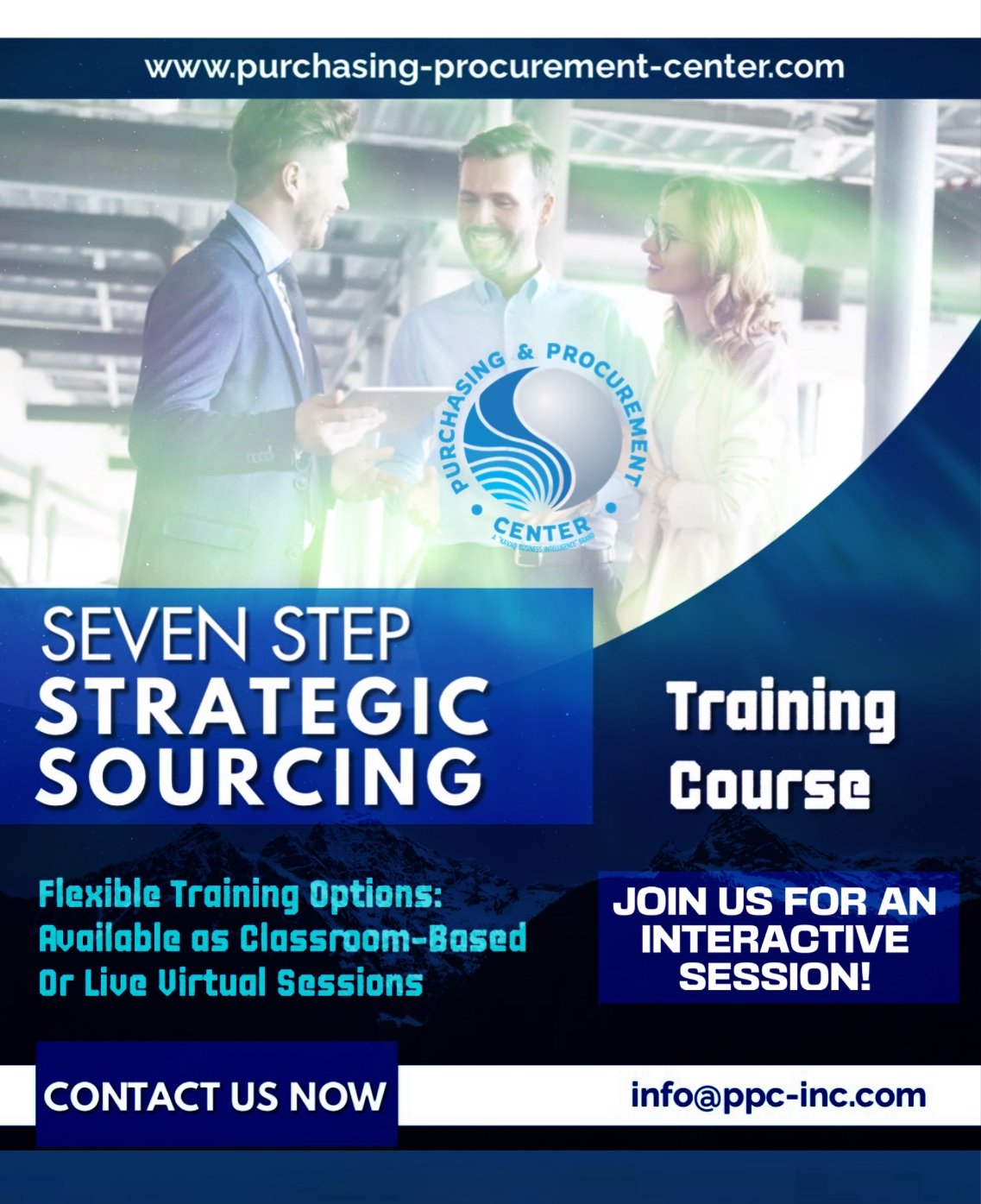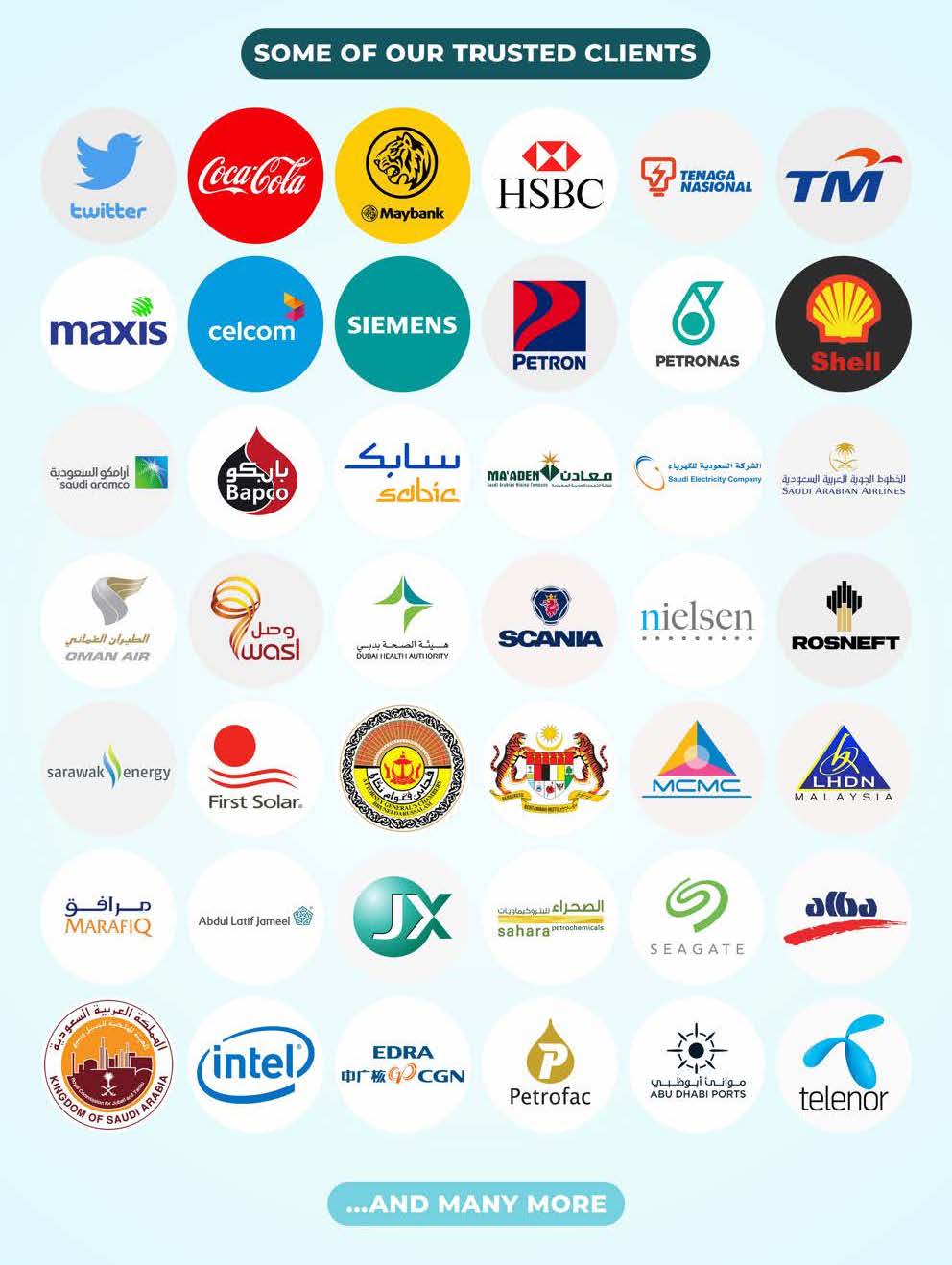STRATEGIC SOURCING TRAINING
SEVEN STEP STRATEGIC SOURCING!

WHY THIS STRATEGIC SOURCING TRAINING?
This 7 Step Strategic Sourcing Training program is designed to help you elevate your sourcing game by focusing on the key areas of:
- Developing category strategies
- Managing suppliers
- Designing and operating multiple supply networks
- Leveraging technology enablers
- Collaborating internally and externally
- Attracting and retaining supply management talent
- Managing and enabling the future supply management organization
This Strategic Sourcing Training Program is led by experts in the field who have decades of experience in procurement and sourcing.
Over the course of two days, you'll dive deep into the world of strategic sourcing and learn invaluable skills that will help you lower costs, increase productivity, and boost your company's bottom line.
Strategic Sourcing Training Outline
Here's a breakdown of what you'll learn in each step of the 7 Step Strategic Sourcing:
Step 1: Developing Category Strategies
Step 1 reviews the elements essential to becoming more strategic and adding real value to the organization.
- 7 Areas Critical to Future Procurement Success
- 4 Stages to World Class Supply Management
- Developing the Spend Profile
- Creating Time to Be Strategic
- Material/Services Hierarchical Purchasing Code Development
- Segmentation/Category Management Model
Step 2: Developing and Managing Suppliers
Step 2 recognizes that an organization can perform no better than its suppliers.
- Bidder Qualification And Selection Best Practices
- Supplier Performance Measurement Best Practices
- Objectives of Supplier Performance Measurement
- Supplier Performance Measurement Key Points
Step 3: Designing and Operating Multiple Supply Networks
Step 3 focuses on the understanding that the best way to increase profit is by reducing the Total Cost of Ownership for every member of the entire supply chain.
- Supply Chain Mapping
- Reducing Waste in the Supply Chain
- Typical Supplier Risk Management Process
- Total Cost of Ownership
Step 4: Leveraging Technology Enablers
Step 4 recognizes that world-class organizations no longer talk about whether or not they should improve their processes, but how fast they can improve them.
- Reengineering The Processes
- SRM and Integration
- Exception Management
Step 5: Collaborating Internally and Externally
Step 5 identifies many best practices that contribute to improving both buyer and supplier performance.
- Supplier Relationship Management Maturity Model
- Being an “A” Customer
- Developing Trust
Step 6: Attracting and Retaining Supply Management Talent
Step 6 focuses on the fact that Supply Management skill sets are a predictor of the supplier’s responsiveness to the buying organization’s requirements and are positively related to a firm’s financial performance.
- Supply Management Competencies
- Key to Success in Supply Management Departments
- Example Job Descriptions For Purchasing
- Training Programs
Step 7: Managing and enabling the Future Supply Management Organization
Step 7 brings to the conclusion many of the important issues covered in previous steps and adds some practical implementation approaches to show Procurements contributions to the organization
- Purchasing Impact on the Bottom Line
- Key Performance Measurements
- Strategic Sourcing Plans
Over the course of two days, you'll dive deep into the world of strategic sourcing and learn invaluable skills that will help you lower costs, increase productivity, and boost your company's bottom line.
WHAT YOU WILL LEARN?
• 7 Areas Critical To Future Procurement Success
• 4 Stages To World Class Supply Management
• Many Increased Skill Sets In Supply Management
• Supplier Segmentation Model And Their Strategies
• 3 Categories For Organizing The Spend Profile for increased effectiveness
• Steps In Improving Internal And External Collaboration
• How To Develop A “Purchasing Hierarchical Coding System”
• How To Get More Time To Work On Strategic Issues
• The Important Sections To Include In A Strategic Sourcing Plan
• Total Cost of Ownership Models
WHO SHOULD ATTEND?
• Managers and Professionals in Purchasing, Procurement, and Supply Management
• Materials, Contracts, Projects, Maintenance, Operations, and Financial Managers and,
• All other Managers and Professionals interested in lowering total cost and increasing productivity and profit contributions from better supply management operations.
TRAINING METHODOLOGY
Participants will gain from a combination of instructional methods, including lectures by an experienced practitioner and consultant, exercises, group discussions covering current practices and their relationship to the implementation of concepts and techniques discussed.
ORGANIZATIONAL IMPACT FROM THIS STRATEGIC SOURCING TRAINING
The organization will benefit by:
• The greater strategic focus of those involved in supply management resulting in an improved bottom line
• Higher productivity of personnel involved in supply management activities
• Reduced total cost of ownership for purchased materials, equipment, and services
• Improved productivity of the entire organization by better on-time delivery of high-quality goods and services
• Improved supplier performance and relations
• Increased customer satisfaction
PERSONAL IMPACT
Attendees will gain by participation in this program as a result of:
• Increased skill sets in supply management
• A greater sense of professionalism
• Knowledge of world-class supply management practices
• Greater ability to lead continuous improvement programs
• Increased recognition by the organization due to improved performance


Frequently Asked Questions (FAQs)
Q1: What is the duration of the Strategic Sourcing Training program?
A: The program spans over two days and includes a combination of lectures, exercises, and group discussions.
Q2: How much does the Strategic Sourcing Training cost?
A: The cost of the training program is USD $497, which includes all course materials and access to online resources.
Q3: How will this training impact my organization?
A: Your organization will benefit from a greater strategic focus, reduced total cost of ownership, improved supplier performance, and increased customer satisfaction.
Q4: Will I receive a certification upon completion?
A: Yes, participants will receive a certification upon successful completion of the training program, which can help enhance your professional credentials.
Q5: How do I register for the training?
A: You can register and pay for the course online. Once registered, you will receive a username and password to access the learning platform.
